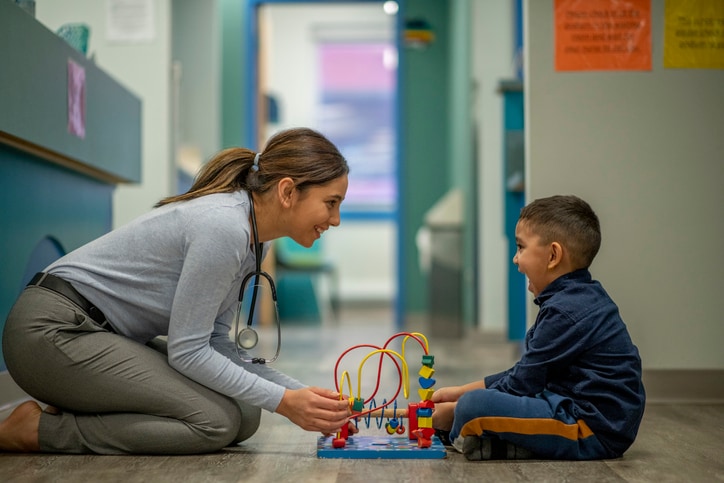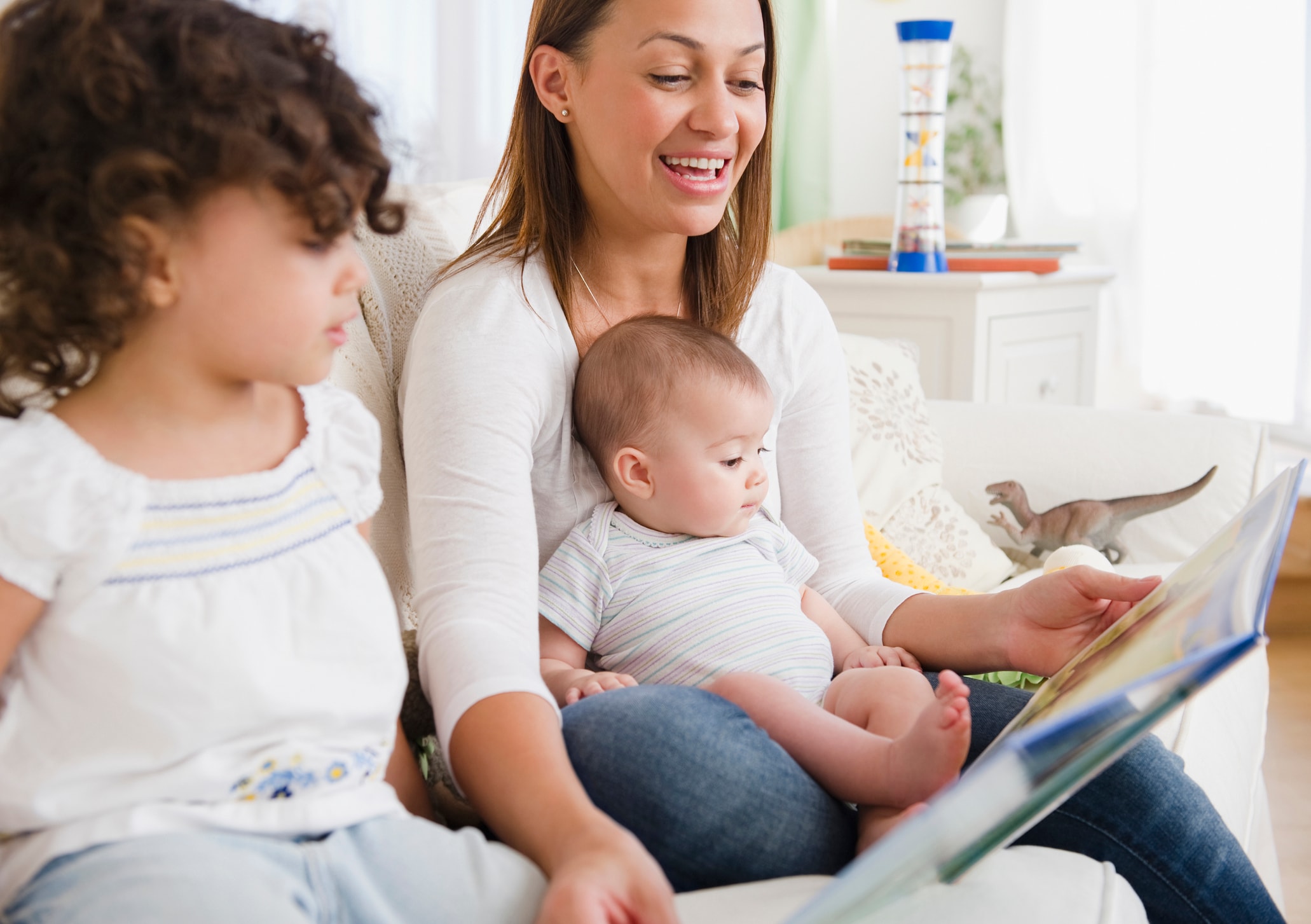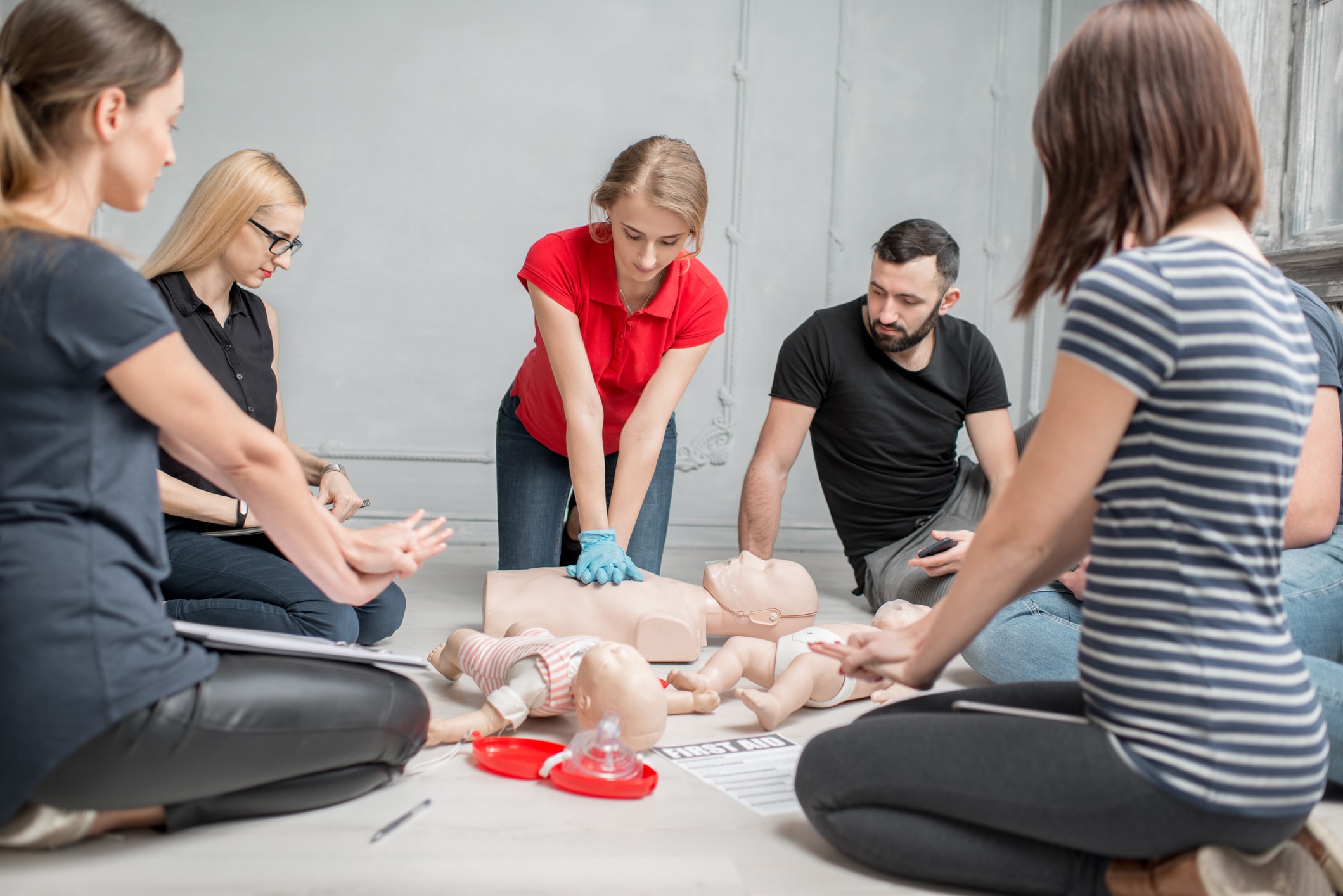Parenting means a lot of things, from providing food and shelter and giving lots of hugs and kisses to making sure our littles have access to as much support as possible. One of those supports might come in the way of occupational therapy for kids.
There’s a lot of confusion as to what pediatric occupational therapy, also referred to as OT, actually is, though. In simple terms, it’s a type of play-based therapy meant to help kids build development skills. “The main occupation of childhood is play,” says Jenny Villalobos, doctor of occupational therapy and owner of Just for Kidz Therapy in Parkland, Florida. “Through play, children learn important skills including but not limited to: sensory processing, executive functioning, self regulation, communication, motor skills and self care.”
If you’re looking to learn more about occupational therapy for kids, and how it might benefit your child, read on.
What is occupational therapy for kids?
Every child’s experience in occupational therapy will be different, but in general, occupational therapy is a form of play-based focused on building kids’ developmental skills and their abilities to perform basic daily tasks. Occupational therapy goals for kids might include anything from “learning to feed themselves, drawing shapes, washing their hands and putting pieces into a puzzle,” says Marielle Marquez, pediatric occupational therapist and founder of Thrive Little.
“Occupational therapy goals are person-specific and designed to address the functional needs of each individual healthcare recipient,” says Adrianne Smiley, managing occupational therapist and owner at Kingdom Therapy Services.
Villalobos says occupational therapy for kids facilitates participation and independence in the activities kids want or need to do. And while pediatric OT is suitable for any child needing support, Villalobos adds that one of the great things about it is it “helps kids with disabilities be… well, kids!”
“Occupational therapy goals are person-specific and designed to address the functional needs of each individual.”
— Adrianne Smiley, occupational therapist and owner of Kingdom Therapy Services
Why would a child need occupational therapy?
Occupational therapy can be incredibly beneficial for many children: ones with and without disabilities, as well as kids who are neurodiverse and neurotypical. “Children most often need occupational therapy to address developmental delays,” says Smiley.
Cleveland Clinic defines a developmental delay as when a child is slow to reach one or more developmental milestones compared to other children, such as rolling over, walking, feeding and talking. “These skills are important because (they) allow children to play,” explains Smiley. “When children do not engage in play, their risk for delayed milestones increases drastically.”
For school-aged children, Marquez says OT can focus more on fine motor delays, such as holding a pencil correctly, writing clearly and cutting with scissors. “For children with sensory challenges, such as those with autism,” Marquez adds, “OTs can address sensory differences when it interferes with function.”
Julie Neale, mother of two in the Bay Area and podcaster at Mother’s Quest, says her eldest son (now a freshman at UCLA) began occupational therapy soon after he was diagnosed with autism at 18 months. Their occupational therapist helped them to develop a ‘sensory diet’ — a group of individualized activities that can help a person meet their sensory needs, avoid overstimulation and help them stay emotionally regulated — that included things like climbing, pushing and pulling. “It was helpful to learn about what kinds of activities supported his needs.”
When should parents consider OT for kids?
“It’s best to seek support as soon as you or a trusted professional, such as your child’s pediatrician, have concerns,” says Marquez, who warns against a “wait and see” approach. “If you have your child evaluated, the therapist will let you know if your concerns qualify them for occupational therapy.”
An evaluation conducted by a licensed occupational therapist can help identify delays or other issues a child might be struggling with and can also help them make a diagnosis, which can help the child’s family and care team understand what types of support a child may need at home, school and other common kid environments.
If the child isn’t a good candidate for occupational therapy, Marquez says the OT may recommend other professionals who can help the child, as well as offer ideas to address concerns.
What does an occupational therapy session look like?
Every OT session varies widely, depending on an individual child’s needs. “My practice is play-based and neurodiversity-affirming,” says Villalobos. “This means we follow the child’s lead. We utilize what is called ‘guided play’ to target specific learning goals.”
“Occupational therapists work with children in hospitals, schools, therapy clinics and in their own home.”
— Marielle Marquez, pediatric occupational therapist
Villalobos explains that a typical pediatric occupational therapy session often involves her sitting on the floor with the child, setting out some toys and seeing what her patient gravitates to first. “We do a lot of sensory exploration to determine the child’s unique sensory profile. Once we determine their sensory preferences, we incorporate those experiences into the sessions.”
The location of every OT session may also vary. “Occupational therapists work with children in hospitals, schools, therapy clinics and in their own home,” says Marquez. While some families may prefer home-based sessions, others may prefer a clinic, which may include a “gym” area with swings, climbing walls, trampolines, crash pads, board games and more.
For Rachel Slavin, a mother of two and writer/editor in Suffolk County, Long Island, early sessions for her daughter Aimee (who was diagnosed with autism) involved helping the young girl identify her mother.
The occupational therapist assured her Aimee would begin recognizing her mother in no time. They printed photos of Slavin and hid them around the room, encouraging Aimee to “find mom” over and over. She also used a recording of Slavin’s voice so Aimee would be able to identify it better. Finally, a day came when Slavin came to pick up her Aimee, and her daughter immediately recognized her and shouted, “Mom!”
“She was almost 2 years old at the time, and I was so happy,” says Slavin.
As Aimee grew older, her sessions shifted to helping her learn patience and turn-taking while playing games with other kids and figuring out ways to self-regulate.
How to access OT services for kids
“For children ages 0-3, you can apply to your state’s early intervention program. These programs are all free or low cost and a referral from a doctor is not necessary,” says Marquez. She recommends looking at the Centers for Disease Control and Prevention’s list of early intervention programs by state.
For families with children age 3 and up, Marquez advises reaching out to their school district for an assessment. Depending on your district, though, you might be in for a wait.
“It may be an option to go through your child’s insurance. Check with your plan to see if OT is covered,” adds Marquez. When going through insurance, find out how many sessions are covered per year and plan accordingly, she says.
Some clinics also accept private pay (and may be a good option if waitlists for other clinics are lengthy), but be aware that the cost can be significant. Inquire about payment plan options, if available.
If you’re still having trouble finding services, reach out to your child’s school and/or pediatrician for more ideas on what might be available to you. And while you wait, consider learning more about occupational therapy for kids from the list below (many occupational therapy exercises can be practiced at home with few supplies. Don’t be afraid to use these to play with your child and help them get the support they need).
Where to learn more about occupational therapy for kids
Websites
Books
- “Raising a Sensory Smart Child” by Lindsey Biel and Nancy Peske.
- “Occupational Therapy Activities for Kids: 100 Fun Games and Exercises to Build Skills” by Heather Ajzenman.
- “Everyday Games for Sensory Processing Disorder” by Barbara Sher.
TikTok
- @stephdtheot.
- Katie M @katietheot.
- Amanda Mathers, OTR/L @yourpediatricot.
- @gabriellatheot.
- Alvin P., OTR/L @ot.outside.the.box.
- Jorge Ochoa, OTR/L @ottipsandbeyond.
- Little Roos Pediatric Therapy & Infant Wellness @littleroospediatrictherapy.
- Solid Starts @solidstarts.
- Laura Petix, OT @theotbutterfly.





